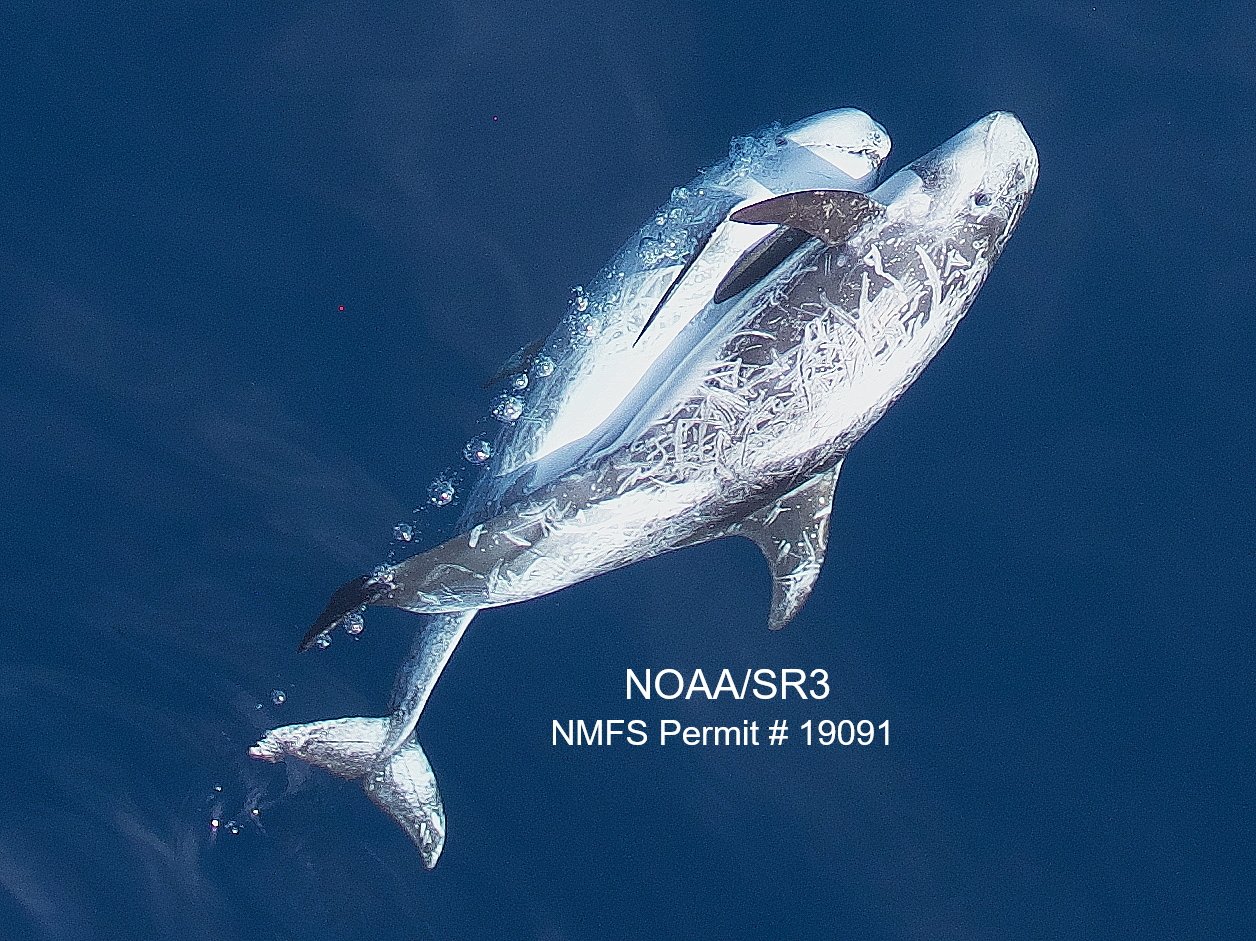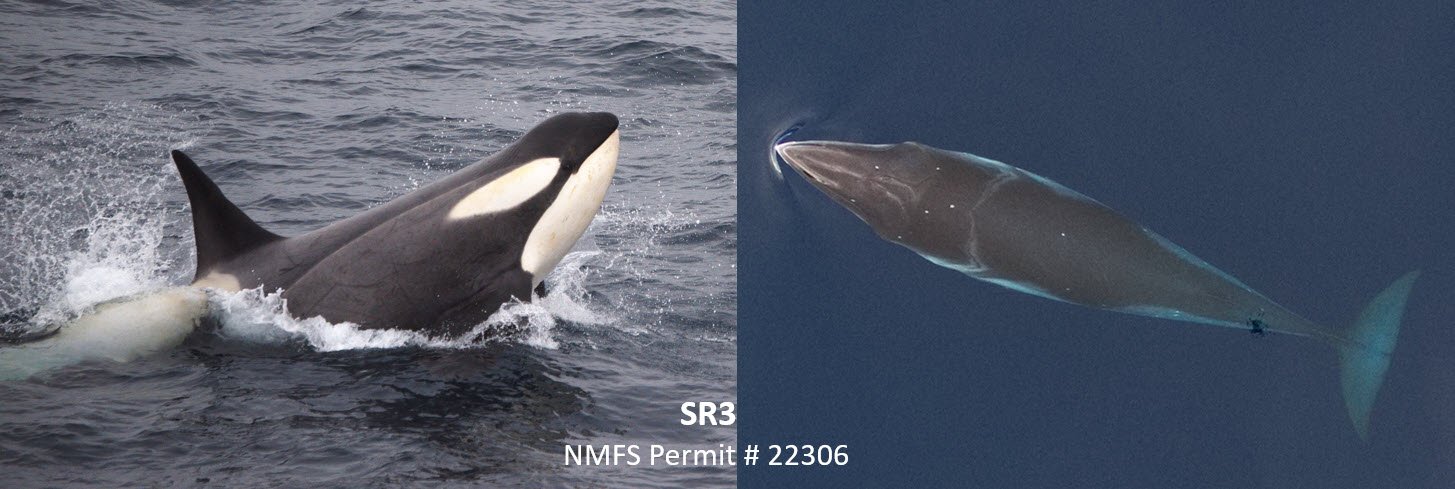Bigg’s killer whale T65A5 “Indy” was observed entangled in legally-set recreational crab pot gear on July 5th in Puget Sound. SR3, along with our partners, stand trained and ready year-round to respond to urgent situations like this.
When the report of an entangled killer whale was received and confirmed by the National Oceanic and Atmospheric Administration (NOAA), a team of skilled partners were activated to respond. While SR3, Cascadia Research Collective, and NOAA assembled a team of highly trained whale entanglement responders and killer whale biologists, local tour operators with the Pacific Whale Watch Association assisted with monitoring the killer whale and identified him as transient killer whale T65A5. Members of Orca Network also tracked T65A5 from shore to ensure the entangled animal’s location was readily available to the response team.
Once the whale watching vessels needed to return to port, commercial tugboat M/V Michael Uhl remained on scene in Saratoga Passage, just off Whidbey Island, monitoring the whale at a safe distance until the professional response team could arrive. The U.S. Coast Guard launched a drone to document and provide some initial images for assessment of the entanglement.
On scene, the professional response team met up with Florian Graner, a National Marine Fisheries permitted drone operator from SeaLife Productions. Florian gathered aerial footage that was critical for real-time planning of how the team could attempt to remove the entanglement.
Disentangling a killer whale is not a common occurrence, and their behavior is very different from the gray or humpback whales that SR3 typically responds to. Killer whales, which are actually the largest dolphin species, are more agile and quick than large baleen whales like humpbacks. The expertise of NOAA’s killer whale biologists was essential to assess the animal’s behavior and help the team consider what modifications to our standard techniques may be required.
After a couple attempts to remove the gear, the whale moved into shallow water where the crab pot appeared to drag on the bottom. It was noted that the entanglement configuration changed and the gear came off on its own immediately after! The NOAA vessel followed the whale as it moved rapidly north to confirm that it was gear free.
SR3 and Cascadia Research Collective collected the full gear set for analysis and documentation. Gear analysis helps determine what changes may be needed to prevent future entanglements. It is important to note that this gear was legally set and configured.
T65A5 "Indy", born in 2014, is the fifth of six calves in the T65A matriline ("Artemis"). Artemis was born in 1986 and travels with her other five offspring regularly throughout the year. While still observed periodically with his family group, the 9-year old Indy is often seen traveling apart from his family. Another member of the Pacific Whale Watch Association, Maya’s Legacy, observed T65A5 breaching and feeding with his family group near the US-Canada border on Monday, July 10th, a great indication that his temporary entanglement is not causing him any serious issues.
This incident, along with another just a few weeks ago, raises concerns about killer whale entanglement. Luckily, Indy was able to shed the gear himself, but SR3 is ready for all scenarios and will mobilize to help free less-lucky whales from their entanglements in the future.
Please remember that only trained and permitted professionals should attempt to disentangle a whale. If you see an entangled whale please call the Whale Entanglement Hotline at 1-877-SOS-WHAL (767-9425).











